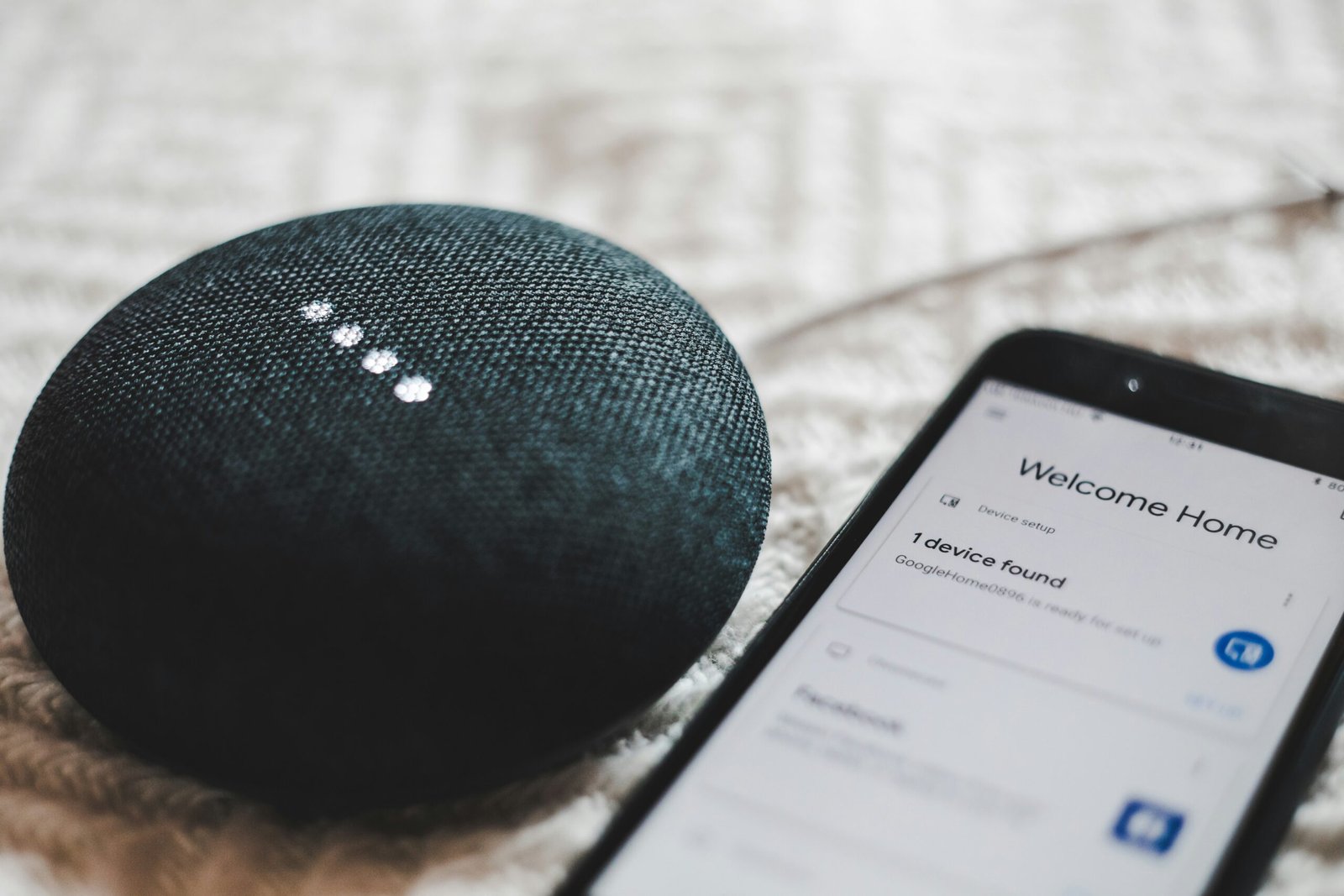Introduction: Embracing the Smart Home Revolution
Welcome to the era of smart homes, where the mundane tasks of everyday life are seamlessly automated, and the very environment around us seems to respond to our every need. From adjusting the thermostat to brewing a fresh pot of coffee, smart home devices have revolutionized the way we interact with our living spaces. However, as with any technological advancement, there are bound to be hiccups along the way. Fear not, for I am here to guide you through the potential pitfalls and help you troubleshoot any smart home connectivity issues that may arise.
Understanding Smart Home Setup
Before we delve into the nitty-gritty of troubleshooting, it’s essential to understand the fundamentals of setting up a smart home. The backbone of any smart home ecosystem is the connectivity between devices. Whether it’s a smart thermostat, lighting system, or security cameras, these devices rely on a stable network to communicate and function effectively.
When embarking on your smart home journey, it’s crucial to ensure that your Wi-Fi network is robust and capable of handling the increased load from the myriad of connected devices. A reliable internet connection is the linchpin of a successful smart home setup. Additionally, familiarize yourself with the specific requirements of each device, such as compatibility with your existing network and any additional hubs or bridges that may be necessary for seamless integration.
Common Smart Home Connectivity Issues
Now, let’s address the elephant in the room – connectivity issues. Despite the allure of a fully automated home, the reality is that smart devices are not immune to glitches and hiccups. Here are some common connectivity issues you may encounter:
1. Intermittent Device Connectivity
One of the most frustrating problems is when smart devices intermittently lose connectivity to the network. This can result in devices going offline, unresponsive to commands, or displaying erratic behavior. The culprit behind this issue can vary, ranging from signal interference to network congestion.
2. Inconsistent Performance
Imagine walking into a room expecting the lights to automatically adjust to your preferred setting, only to find them unresponsive or behaving erratically. Inconsistent performance from smart devices can be a major source of frustration. Whether it’s delayed response times or devices failing to execute commands, these issues can disrupt the seamless experience that smart homes promise.
3. Integration Challenges
As you expand your smart home ecosystem with new devices, you may encounter challenges in integrating them with existing systems. Compatibility issues, conflicting protocols, and interoperability barriers can hinder the cohesive functioning of your smart home setup.
Troubleshooting Smart Home Devices
Now that we’ve identified the potential pain points, let’s roll up our sleeves and dive into troubleshooting these smart home woes. Here are some effective strategies to tackle connectivity issues and ensure that your smart home operates with the efficiency and reliability you desire.
1. Optimize Your Wi-Fi Network
Start by optimizing your Wi-Fi network to provide a solid foundation for your smart home devices. Position your router in a central location to ensure better coverage throughout your home. Consider investing in a mesh Wi-Fi system to eliminate dead zones and provide a robust signal to all corners of your living space. Additionally, ensure that your network operates on a clear channel to minimize interference from neighboring networks.
2. Firmware Updates and Maintenance
Regularly check for firmware updates for your smart home devices and ensure that they are running the latest software versions. Manufacturers often release updates to address connectivity issues, enhance performance, and patch security vulnerabilities. By keeping your devices up to date, you can mitigate many potential connectivity problems.
3. Bandwidth Management
With an increasing number of devices vying for bandwidth on your network, effective bandwidth management becomes crucial. Prioritize your smart home devices to ensure that critical systems, such as security cameras and smart locks, receive the necessary bandwidth for seamless operation. Quality of Service (QoS) settings on your router can help allocate bandwidth based on device priority.
4. Signal Interference Mitigation
Identify and mitigate sources of signal interference that can disrupt the connectivity of your smart home devices. Common culprits include other wireless devices, electronic appliances, and physical barriers. Consider using devices that operate on less congested wireless frequencies, such as the 5GHz band, to reduce interference and improve connectivity.
5. Device Placement and Range Extenders
The physical placement of your smart home devices can significantly impact their connectivity. Ensure that devices are within the optimal range of your Wi-Fi network and consider using range extenders or mesh network nodes to amplify the signal in areas with poor coverage. Additionally, avoid placing devices in close proximity to large metal objects or dense building materials that can impede wireless signals.
Automate Your Home Efficiently
As we troubleshoot connectivity issues, let’s not lose sight of the ultimate goal – to automate your home efficiently. The true beauty of a smart home lies in the seamless integration of devices that work in harmony to enhance your lifestyle. Here are some tips to ensure that your smart home operates with the efficiency and convenience you envisioned.
1. Create Logical Device Groups
Organize your smart home devices into logical groups based on their function and location. This not only simplifies the management of devices but also allows for streamlined automation. For example, grouping all the lights in a particular room enables you to control them collectively with a single command, creating a cohesive and intuitive smart home experience.
2. Implement Customized Automation
Explore the capabilities of your smart home ecosystem to create customized automation routines that cater to your specific needs. Whether it’s scheduling the thermostat to adjust temperatures based on your daily routine or setting up motion-activated lighting for enhanced security, customized automation adds a layer of personalization to your smart home.
3. Voice Control Integration
Integrate voice control platforms, such as Amazon Alexa or Google Assistant, to elevate the convenience of operating your smart home. Voice commands offer a hands-free approach to managing your devices and can streamline daily tasks with simple verbal instructions.
4. Remote Access and Monitoring
Take advantage of remote access capabilities to monitor and control your smart home devices from anywhere. Whether you’re at work, on vacation, or simply lounging in your backyard, the ability to remotely manage your home provides peace of mind and unparalleled convenience.
Conclusion: Conquering the Smart Home Nightmare
As we navigate the intricacies of smart home setup and troubleshooting, it’s important to remember that the rewards far outweigh the occasional challenges. By optimizing your network, addressing connectivity issues, and embracing efficient automation, you can conquer the smart home nightmare and revel in the seamless integration of technology into your living space. So, fear not, for with the right strategies and a dash of perseverance, you can transform your smart home into a haven of convenience and innovation.
Embracing Sustainable Energy Solutions
As we delve deeper into the world of smart homes, it’s crucial to consider the environmental impact of our technological advancements. Smart home devices, with their constant energy consumption and data processing needs, can have a significant carbon footprint. However, this challenge also presents an opportunity to embrace sustainable energy solutions and create a more eco-friendly smart home environment.
Harnessing Renewable Energy
One of the most impactful ways to reduce the environmental impact of your smart home is to harness renewable energy sources. Consider integrating solar panels or wind turbines into your home’s energy infrastructure. These renewable energy solutions not only power your smart home devices but also contribute to a more sustainable future.
By generating your own renewable energy, you can reduce your reliance on traditional grid-supplied electricity, which is often generated from fossil fuels. This shift not only benefits the environment but also insulates you from fluctuations in energy prices and potential grid outages.
Energy-Efficient Smart Home Devices
When selecting smart home devices, prioritize energy-efficient models that minimize power consumption. Look for devices with Energy Star or similar energy-efficiency certifications, which indicate that they meet rigorous standards for reduced energy use. These energy-efficient devices can significantly lower your overall energy consumption and contribute to a more sustainable smart home.
Additionally, consider the lifespan and repairability of your smart home devices. Opting for products with extended warranties and modular designs that allow for easy repair and upgrades can help reduce electronic waste and promote a more sustainable smart home ecosystem.
Smart Home Automation for Energy Management
Leveraging the power of smart home automation can also play a crucial role in managing energy consumption. Integrate smart thermostats, lighting systems, and appliances that can automatically adjust their energy usage based on occupancy, time of day, or other preset parameters.
For instance, a smart thermostat can learn your household’s temperature preferences and adjust the heating or cooling accordingly, ensuring optimal comfort while minimizing energy waste. Similarly, smart lighting systems can automatically turn off lights in unoccupied rooms, further reducing your home’s energy footprint.
Data Privacy and Security Considerations
As we embrace the convenience and efficiency of smart home technology, it’s essential to address the critical issues of data privacy and security. The interconnected nature of smart devices means that they collect and transmit a wealth of personal data, from your daily routines to sensitive information about your home and family.
Safeguarding Your Digital Footprint
To protect your privacy and secure your smart home, it’s crucial to take proactive steps to safeguard your digital footprint. Start by researching the data collection and privacy policies of the smart home devices you plan to integrate into your home. Understand how your personal information is being used and stored, and seek out products that prioritize data privacy and security.
Regularly update your smart home devices with the latest security patches and firmware updates to address any known vulnerabilities. Additionally, consider implementing strong encryption protocols, enabling two-factor authentication, and carefully managing user access to your smart home network and devices.
Navigating the Smart Home Ecosystem
As the smart home landscape continues to evolve, it’s essential to stay informed and adaptable. The key to successfully navigating this dynamic ecosystem lies in your willingness to embrace new technologies, troubleshoot challenges, and continuously optimize your smart home setup.
Continuous Improvement and Adaptation
Smart home technology is not a one-time investment; it’s an ongoing process of improvement and adaptation. As new devices and features are introduced, be prepared to assess their compatibility and potential integration into your existing setup. Stay attuned to industry trends and advancements, and be open to upgrading or replacing outdated devices to ensure your smart home remains cutting-edge and efficient.
Leveraging Professional Assistance
For those who prefer a more hands-off approach or face particularly complex smart home challenges, consider engaging the services of a professional smart home technician or installer. These experts can assist with the design, installation, and ongoing maintenance of your smart home system, ensuring that it operates seamlessly and efficiently.
By collaborating with experienced professionals, you can benefit from their expertise, gain access to specialized tools and resources, and enjoy the peace of mind that comes with having a reliable support system for your smart home.
Building a Future-Proof Smart Home
As you continue your smart home journey, remember that the path is not always a straight line. Embrace the challenges, explore innovative solutions, and stay committed to creating a smart home that not only enhances your daily life but also aligns with your values and environmental concerns.
By addressing connectivity issues, optimizing energy efficiency, safeguarding your privacy, and continuously adapting to the evolving smart home landscape, you can build a future-proof smart home that truly enhances your quality of life and leaves a positive impact on the world around you.

